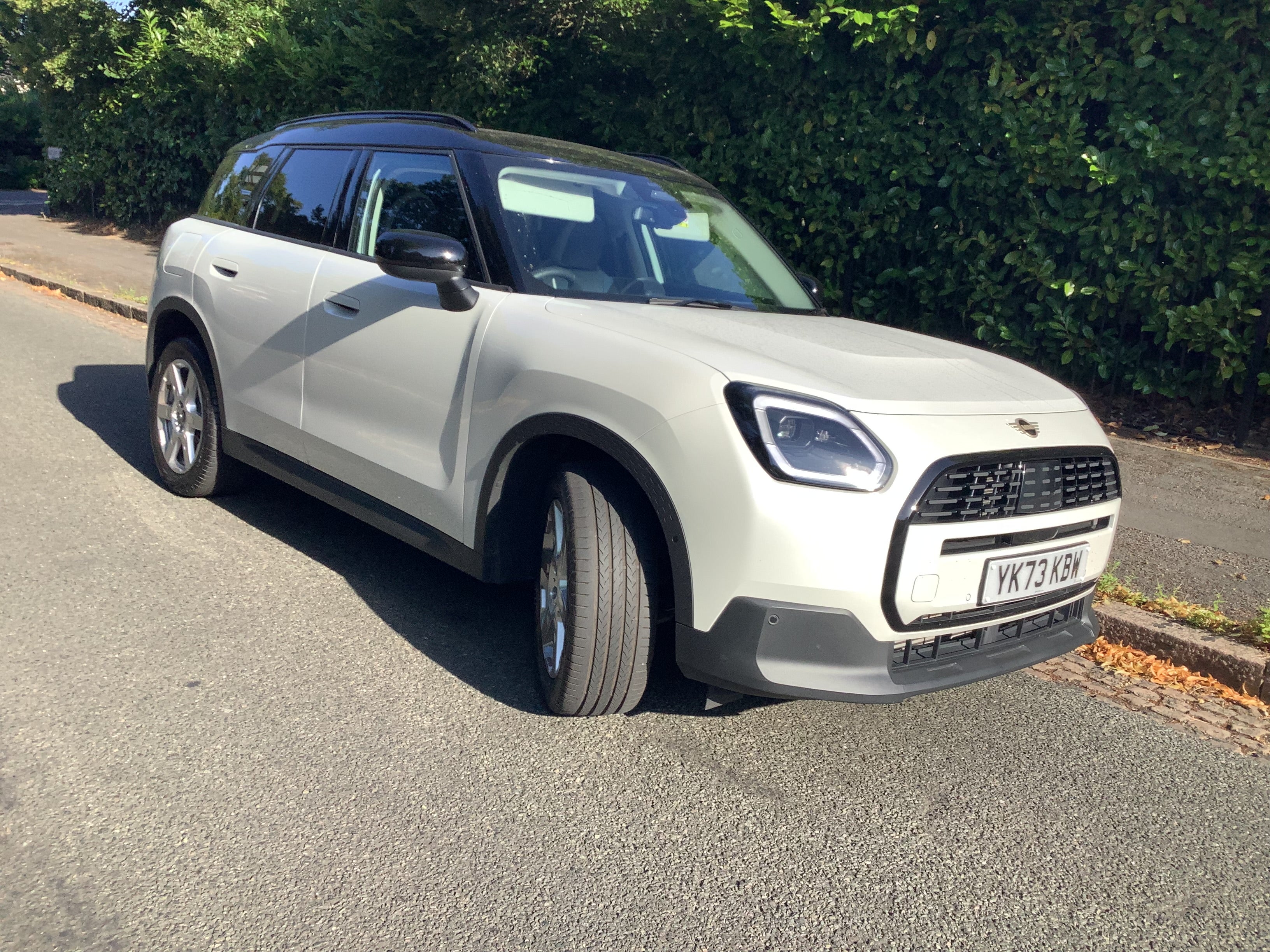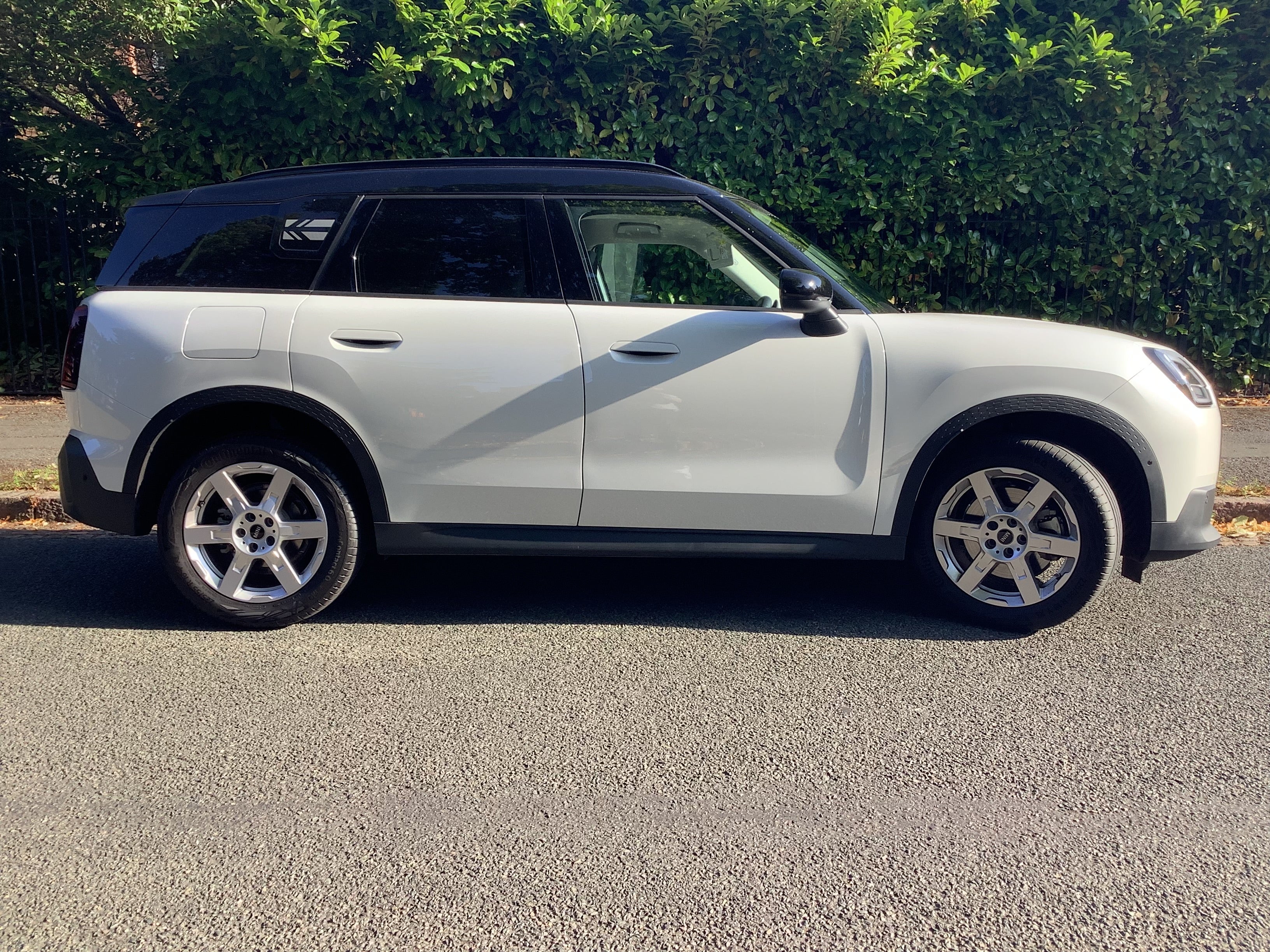Biggie small: Mini Countryman C
Newly updated and larger than ever, BMW’s latest iteration of the former British icon makes Sean O’Grady wonder how much longer they can keep calling it ‘mini’


Your support helps us to tell the story
From reproductive rights to climate change to Big Tech, The Independent is on the ground when the story is developing. Whether it's investigating the financials of Elon Musk's pro-Trump PAC or producing our latest documentary, 'The A Word', which shines a light on the American women fighting for reproductive rights, we know how important it is to parse out the facts from the messaging.
At such a critical moment in US history, we need reporters on the ground. Your donation allows us to keep sending journalists to speak to both sides of the story.
The Independent is trusted by Americans across the entire political spectrum. And unlike many other quality news outlets, we choose not to lock Americans out of our reporting and analysis with paywalls. We believe quality journalism should be available to everyone, paid for by those who can afford it.
Your support makes all the difference.There must be a point when it becomes just plain silly to slap a Mini badge on the plump rump of some bloated SUV. The latest iteration of the Mini Countryman is certainly not very “mini” in any respect, being 4.4 metres long, and weighing in at some 1.6 tonnes. It’s the biggest “mini” ever, in fact.
When BMW, present custodians of the Mini brand (and admittedly commercially and technologically successful ones), launched the first version of the Countryman in 2010 they pointed out their aim was to ask for the smallest vehicle of the type in that segment. Even that pretence has now vanished.
Read more: Mini Cooper review: Proof that electric cars can be fun to drive

Like the Fiat 500 and the Smart car, what were once tiny but charming and fascinating artefacts, conceived by often brilliant engineers, have become, well, just another medium-sized SUV, just another brand, ever more generic.
Perhaps one day, when BMW and Great Wall Motors of China deepen their relationship and joint venture to make electric Minis in China, we’ll see a full-size “Mini”, a three-tonne long wheelbase SUV bigger than a Cadillac Escalade. Maybe they should revive another old name for such projects – “Maxi”.

Anyhow, as things stand you may as well know that the third generation of the Mini Countryman shares a lot of its underpinnings with the BMW 1 Series and 2 Series, and it is built with them in Leipzig. I mention this because there are Union Jack-derived graphics around this Mini, and you deserve to know the facts.
All that said, it’s a nice motor with a very attractive blend of serious quality and playfulness about it, which is the new tradition of the BMW-built models. Most of the traditional Mini styling cues have faded away, which is just as well because otherwise it would look ridiculous.
Instead, they picked up some new touches that look derived from contemporary Land Rovers and Range Rovers. They’ve plonked a kind of mock storage box graphic thing on the upper rear flank, for example, like the new Defenders, while the rear lights are a slim vertical stack, as in the Range Rover.

The interior materials, meanwhile, don’t seem particularly expensive or opulent, but they are tasteful, comfortable and look to be hard-wearing.
They’ve retained the giant dinner-plate screen in the centre of the dash, reminiscent of the classic Mini’s central speedo, and you can set it to any combination of mood colours and information you prefer.

Ironically, given the technologically advanced times we live in, in the more basic models you also have to rely on the big central screen for a speed readout; only the better equipped cars have a kind of head-up display, and none have a conventional binnacle. It is all a bit eccentric to my mind.

Best of all is the power switch. Nearly all new cars now have dispensed with the idea of twisting a key in the ignition to start things up, and instead opted for a start button – a bit dull. But for the Mini we have a kind of vestigial key, a key-shaped switch sticking out of the dash as if you’ve left it in there. Twist it to start the engine – very old school – and twist it again to switch off.
As I say, it’s the kind of thing that makes the modern Mini still quite endearing, despite the weight gain and everything. If I were wealthy enough, I’d buy a Countryman on the strength of that alone. After all, the people who designed that into the car must surely care about their work.
THE SPEC
Mini Countryman C
Price: £35,000 (as tested, starts at £29,355)
Engine capacity: 1.5-litre petrol 3-cyl, 7-WP auto
Power output (PS): 168
Top speed (mph): 131
0 to 60 (seconds): 8.3
Fuel economy (mpg): 37.3
CO2 emissions (WLTP, g/km): 143
Obviously, there are downsides, and it does feel heavy to drive. Even by the often-ponderous standards of the mid-size SUV class it doesn’t really engage one, even when you select “sport” mode from the menu of personalities available, and you choose the red-tinged display from the suite of Mini “experiences”.
Like all new cars it beeps and bings if you start going over the speed limit or wander over a lane boundary; and it will also brake with a snap jolt if it thinks you’re not paying attention (or have collapsed at the wheel) but I favour these innovations, set by new EU standards, for their obvious contribution to road safety.
The Countryman comes in a fairly comprehensive range of variants. There are three petrol engines, with mild hybrid/battery electric boost, three trim levels, Cooper and John Cooper Works performance models, front wheel or four-wheel drive, plus two battery all-electric “E” options.

Given the Mini’s premium status, the pricing isn’t too shocking either – just under £30,000 for a base model up to about £50,000 for the top electric one. Despite the inflation in size, the Mini Countryman is still a distinctive choice (way more so than its BMW-badged siblings), and, especially with its lovely panoramic sunroof, will generally try to cheer you up in these difficult times – an underrated virtue in a motor car.
Just don’t try and squeeze it into those little gaps in the traffic. Those days are over.
Join our commenting forum
Join thought-provoking conversations, follow other Independent readers and see their replies
Comments